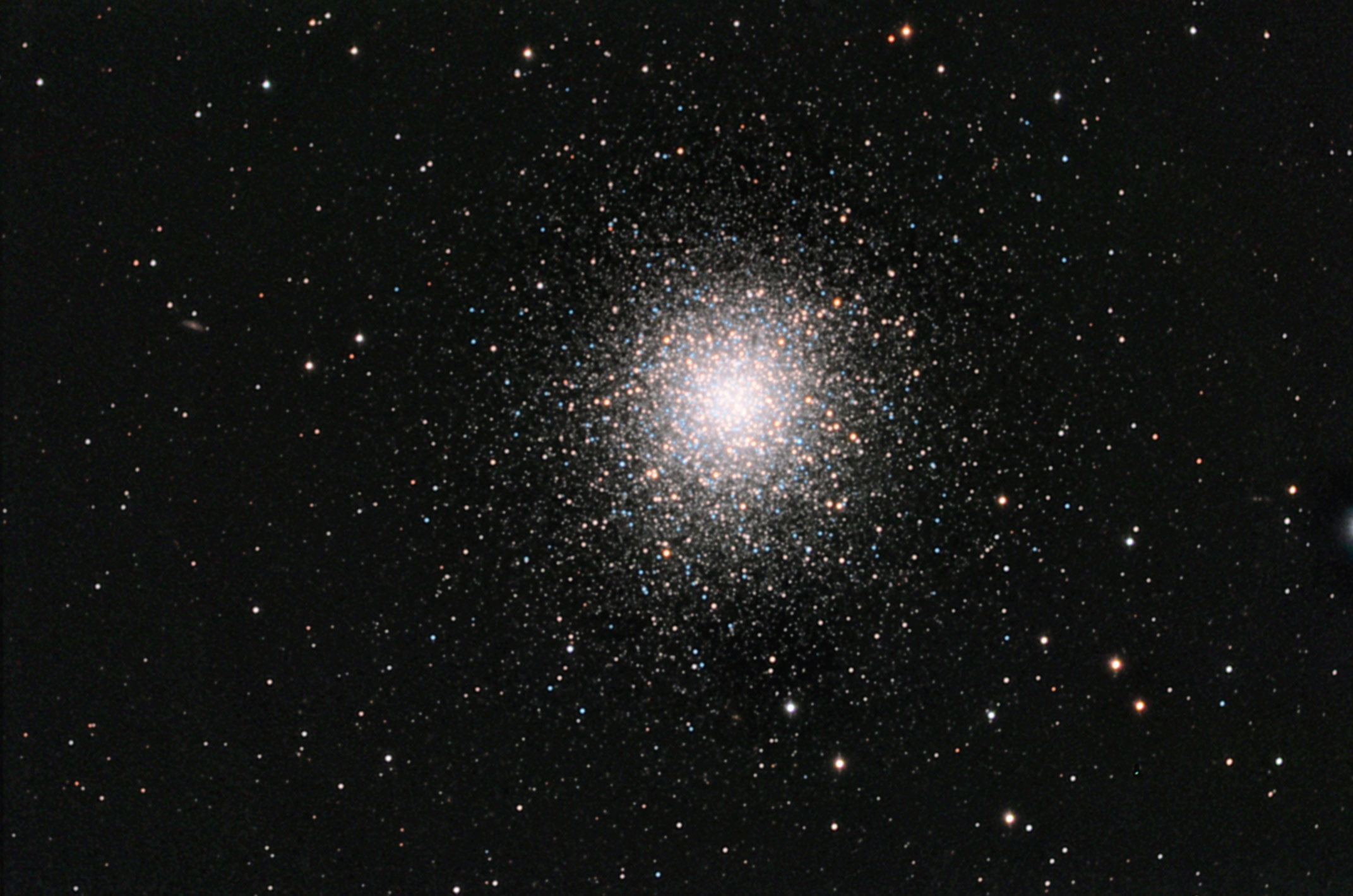News
Kiss the Sky Tonight -- Month of February 2023
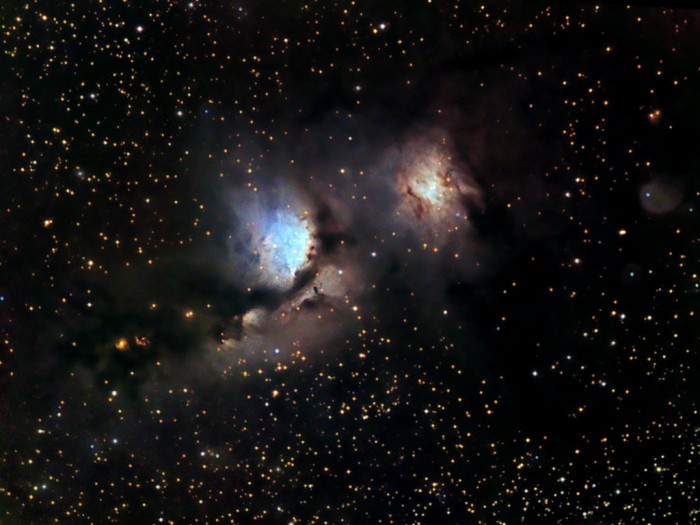
Welcome to the night sky report for February 2023 -- Your guide to the constellations, deep sky objects, planets, and celestial events that are observable during the month. In February, the Winter Triangle is your guide to the night sky. The northern hemisphere is treated to views of the stars Procyon, Sirius, and Betelgeuse, as well as awe-inspiring views of the Orion Nebula, sculpted by the stellar winds of central bright stars. The night sky is truly a celestial showcase. Get outside and explore its wonders from your own backyard.
Astrophysicists Ask a Simple Question -- What if Dark Matter is Just Black Holes?

Proposing an alternative model for how the universe came to be, a team of astrophysicists suggests that all black holes—from those as tiny as a pin head to those covering billions of miles—were created instantly after the Big Bang and account for all dark matter. That’s the implication of a study by astrophysicists at the University of Miami, Yale University, and the European Space Agency that suggests that black holes have existed since the beginning of the universe ¬¬and that these primordial black holes could be as-of-yet unexplained dark matter. Dark matter — which has never been directly observed — is thought to constitute the majority of matter in the universe and act as the unseen scaffolding upon which galaxies form and develop. Physicists have spent years looking at a variety of dark matter candidates, including hypothetical particles such as sterile neutrinos, Weakly Interacting Massive Particles (WIMPS), and axions. If this new black hole hypothesis is proven true with data collected from the James Webb Space Telescope, the discovery may transform scientific understanding of the origins and nature of two cosmic mysteries: dark matter and black holes.
I Asked the AI Program ChatGPT to Write an Astromart Article – Here Are the Results

In December 2022, a chatbot called ChatGPT stunned the world with its impressive writing abilities. Developed by OpenAI, an Artificial Intelligence (AI) research and deployment company based in San Francisco, ChatGPT interacts with users in a simple conversational way. The quality results produced by the program have been so good that some secondary schools and colleges have already banned it for fear that students might use it to write essays. Microsoft Corporation is reportedly planning to incorporate ChatGPT into its Bing web search engine and Office products later this year. What does the unrelenting progress in AI mean for the future? Is AI likely to threaten certain jobs in the years to come? I put ChatGPT to the test and asked it to write an Astromart article. Here are the results.
Kiss the Sky Tonight -- Month of January 2023

Happy New Year and welcome to the night sky report for January 2023 -- Your guide to the constellations, deep sky objects, planets, and celestial events that are observable during the month. The January sky is filled with bright stars in the constellations Orion, Taurus, Gemini, Canis Major, and Canis Minor. Find these cosmic gems by looking toward the southeast in the first few hours after it gets dark. The northern hemisphere also features beautiful views of Capella - a pair of giant yellow stars, Aldebaran - a red giant star, two star clusters - the Hyades (Caldwell 41) and the Pleiades (M45), and the Crab Nebula (M1, NGC 1952). As a special treat during the month, Comet C/2022 E3 (ZTF) is observable with binoculars or a small telescope in the predawn sky for Northern Hemisphere observers as it works its way swiftly across the northern sky. The night sky is truly a celestial showcase. Get outside and explore its wonders from your own backyard.
75 Years Ago – Bell Telephone Laboratories Introduces the Transistor to the World – “The Most Important Invention of the 20th Century”
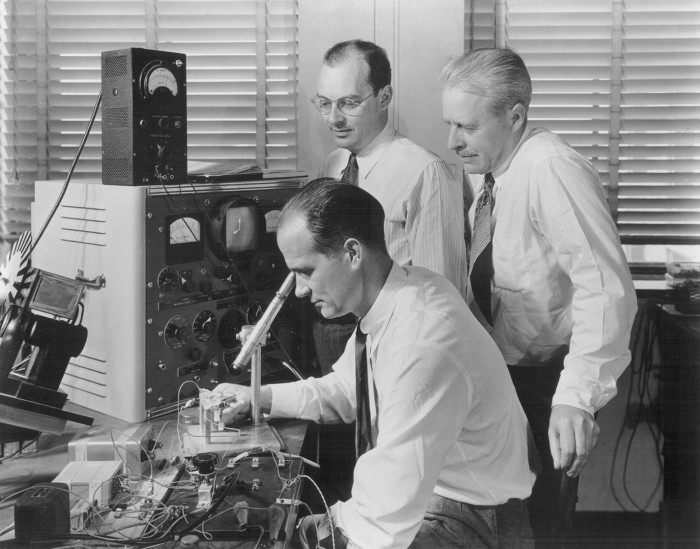
Seventy Five years ago, December 23, 1947, three scientists at Bell Telephone Laboratories in Murray Hill, New Jersey, demonstrated a small semiconductor device, the transistor, which had remarkable electronic amplification and switching properties. John Bardeen, Walter Brattain, and William Shockley, the three Bell Labs inventors of the transistor, had been investigating the properties of semiconductors to see if they could come up with an acceptable substitute for the vacuum tubes and electro-mechanical relays used in telephone networks of the day. Little did they know that their invention would change the world. Today, there are transistors in every place where an electronic device can be found, including satellites and spacecraft. The transistor is the workhorse of electronic technology -- the device that heralded the start of the digital age. Transistors are the basic building block of all integrated circuits. Entire industries based on semiconductors were created in its wake. Indeed, technology as we know it today would not be possible without the transistor.
50 Years Ago Today – The Day We Left the Moon… “God Willing, We Shall Return”

Fifty years ago today, the crew of Apollo 17 completed humanity’s last voyage to the Moon, leaving the lunar surface for the final time. On December 14, 1972, Commander Gene Cernan spoke the now famous quote, “We leave as we came and God willing, we shall return -- with peace and hope for all mankind.” On November 16 of this year, NASA took the next major step in returning to the Moon with the launch of Artemis I. Millions around the world watched live as the Space Launch System (SLS) rocket launched the Orion spacecraft on its 25 day mission that saw the un-crewed vehicle log over 1.4 million miles and travel farther (40,000 miles beyond the far side of the Moon) than any human-rated spacecraft has ever traveled. Orion made its initial flight around the Moon and has returned stunning images rivaling the Apollo 8 “Earthrise.” This historic milestone represents a truly monumental achievement. But this is only the first step.
65 Years Ago – US is Humiliated in its First Attempt to Launch a Satellite into Orbit

The Vanguard launch vehicle was selected by the US for its first attempt to launch a satellite into orbit around the Earth as part of the International Geophysical Year (IGY). The USSR had already launched two Sputnik satellites, with one carrying a dog into orbit, as the US prepared for its first attempt. On December 6, 1957, the Vanguard booster ignited, but about 2 seconds after liftoff, after rising about four feet, the rocket lost thrust and began to crash back down onto the launch pad. As it sank into the launch pad, the fuel tanks ruptured and exploded, destroying the rocket and severely damaging the launch pad. The Vanguard satellite was thrown clear and landed on the ground a short distance away with its transmitters still sending out a beacon signal as it rolled across the ground. It was a humiliating failure. In New York City, members of the Soviet delegation to the United Nations sarcastically asked American delegates if the United States would be interested in receiving aid under USSR's program of technical assistance for backward nations. But by the end of the year, America’s attention was riveted on the efforts of the Army-JPL team to prepare Jupiter-C for an Explorer I satellite-launch attempt, tentatively scheduled for late January l958.
Kiss the Sky Tonight -- Month of December 2022
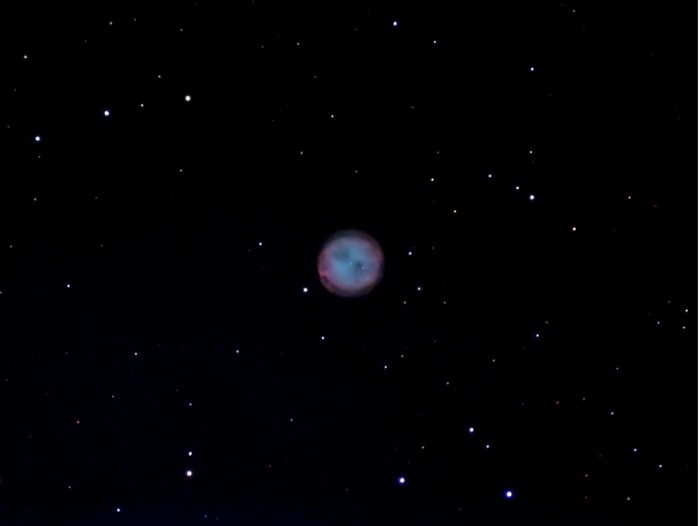
Welcome to the night sky report for December 2022 -- Your guide to the constellations, deep sky objects, planets, and celestial events that are observable during the month. The Moon sweeps past Jupiter twice this month, and actually covers Mars completely, in an event called an occultation, on December 7th. The event is visible across the U.S., except for the Southeast and East Coast, where the Moon will graze closely past Mars. Step outside on a cold December night when the stars shine bright to find the Big Dipper, Cassiopeia, and Cepheus. They will help you locate a binary star system (Eta Cassiopeiae), a fan-shaped open star cluster (M103 or NGC 581), and a variable star (Mu Cephei). Also, throughout the month, you can find Pegasus, the winged stallion, high overhead in the south. The night sky is truly a celestial showcase. Get outside and explore its wonders from your own backyard.
ESA Finds a Black Hole Only 1600 Light-Years from Earth
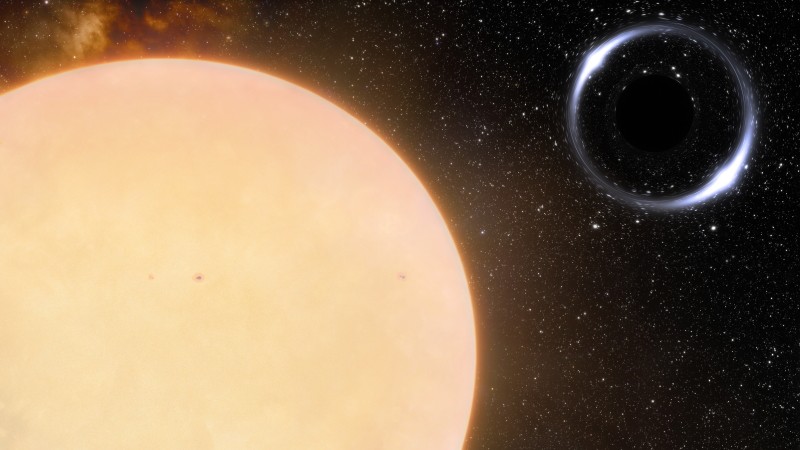
Using data from ESA’s Gaia astrometry mission, astronomers have identified the closest known black hole, less than 1600 light-years away from Earth and have determined its mass. The black hole is orbiting a star similar to our Sun, and was identified by tracking the star that the black hole is orbiting. It is expected to be the first one of many black holes to be discovered using the same method. At the same time, the properties of the binary star system are unexpected, indicating a serious gap in astronomers’ understanding of how such systems form in the first place.
55 Years Ago – The Saturn V Mega-Rocket Flies for the First Time

Fifty five years ago, on November 9, 1967, the first Saturn V rocket, carrying the unmanned Apollo 4 spacecraft, launched from NASA’s Kennedy Space Center (KSC). Scientists calculated that the noise created by the launch was one of the loudest ever on Earth, natural or man-made. The vibrations rattled the press site several miles away as the rocket cleared the launch tower. The mission objectives included testing of structural integrity of the mega-rocket, the compatibility of the rocket and Apollo spacecraft, heat shield and thermal seal integrity, overall reentry operations, launch load and dynamic characteristics, stage separations, rocket subsystems, the emergency detection system, and mission support facilities and operations. All mission objectives were achieved. NASA's Marshall Space Flight Center designed, developed, and managed the production of the Saturn family of rockets that eventually took astronauts to the Moon in 1969. Today, Marshall is developing NASA's Space Launch System (or SLS, sometimes referred to as a “Saturn V on Steroids”), the most powerful rocket ever built, capable of sending astronauts to the Moon, Mars, and deeper into space than ever before.
Kiss the Sky Tonight -- Month of November 2022
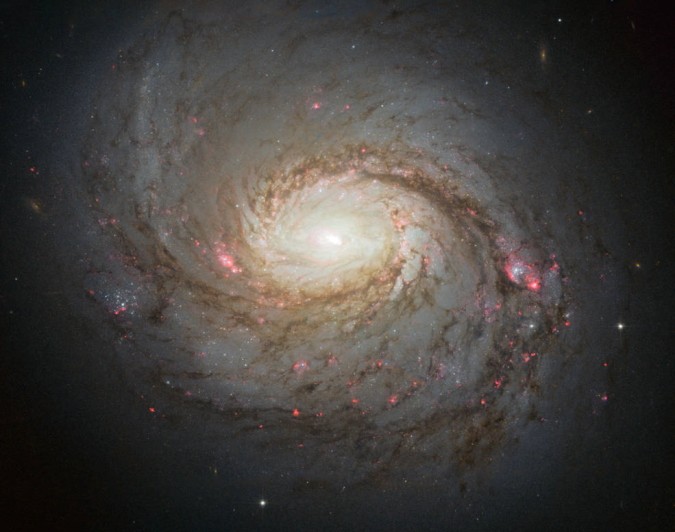
Welcome to the night sky report for November 2022 -- Your guide to the constellations, deep sky objects, planets, and celestial events that are observable during the month. In November, hunt for the fainter constellations of fall, including Pisces, Aries, and Triangulum. They will guide you to several galaxies and a pair of white stars. Look for spiral galaxy M74 and M33, the Triangulum Galaxy. Also, a lunar eclipse and the Leonid meteors will be visible during the month. The night sky is truly a celestial showcase. Get outside and explore its wonders from your own backyard.
The “Hubble Tension” is Real and Has Now Surpassed the Important 5-Sigma Threshold
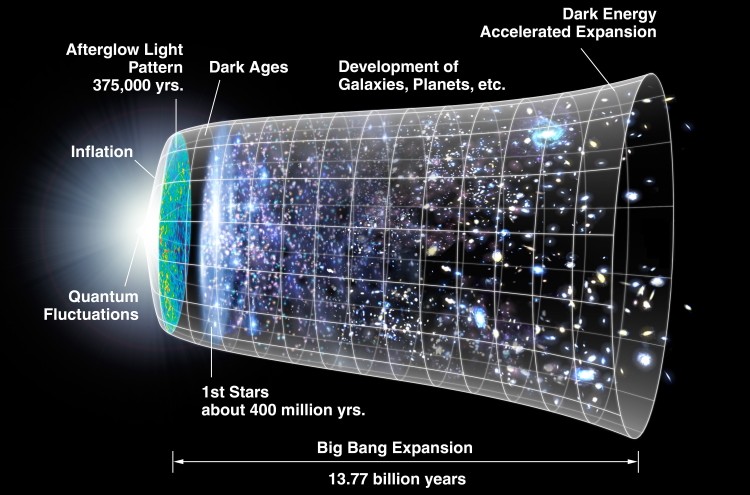
The universe is 13.77 billion years old – or is it? The age of the universe is closely related to the so-called Hubble Constant, which measures the current expansion rate of the universe. A higher Hubble Constant means the universe expands faster and is therefore younger, while a more slowly expanding universe is older. The various measurements of the Hubble Constant have become more and more precise in recent years, but have revealed a puzzling observation: different experiments have given different values of the Hubble Constant and consequently different answers about how old our universe is. What is even more puzzling is that rather than converging on a common end value, these measurements seem to now be diverging. Something is not quite right. This discrepancy has been dubbed the “Hubble Tension.” In the latest findings, the tension has now passed the important 5-sigma threshold that physicists use to distinguish between possible statistical flukes and something that is real and must be explained. Reaching this new statistical level highlights the challenges for both theorists and astrophysicists and could lead to new physics beyond the Standard Model of Cosmology.
NASA and ESA Space Telescopes Lock-in on the Brightest Gamma Ray Burst Ever Recorded
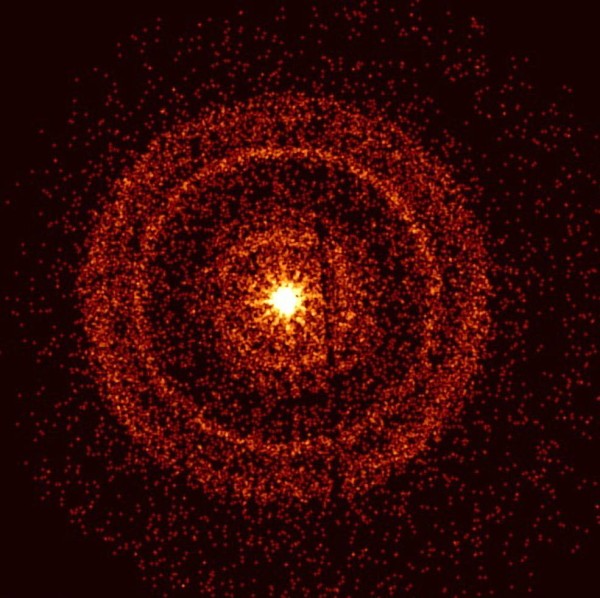
Astronomers around the world were captivated by an unusually bright and long-lasting pulse of high-energy radiation that swept over the Earth on October 9, 2022. The emission came from a Gamma-Ray Burst (GRB) – the most powerful class of explosions in the universe – and ranks as the most luminous event ever recorded. A Gamma-Ray Burst is a super energetic explosion and this one originated in the constellation Sagitta. The signal of the burst – called GRB 221009A – was picked up by many observatories. Some suddenly noticed an increase in their detection of high-energy emissions. Others were pointed towards the source soon thereafter. The event took place some 1.9 billion years ago and likely indicates the birth of a black hole. The GRB provided an unexpected occasion for different NASA and ESA missions to come together and study the same astronomical event.
Funding Member
Sponsors
- OMI OPTICS USA LLC
- BBLABS LLC
- astronomy-shoppe
- BW
- FocusKnobs
- ASTROPHOTOGRAPHY BY MARTIN PUGH
- AstroMart LLC
- Matsumoto Company
- APM-Telescopes
- Waite Research
- Bob's Knobs
- RemoteSkies.net
- SellTelescopes.com
- Anacortes Telescope
- Astromart Customer Service
- Rouz Astro
- Desert Sky Astro Products
View all sponsors
